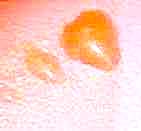Wrinkles Treatment & Remedies
Skin Wrinkle Treatment
It is natural to see wrinkles on the face when you grow old. This is the effect of ageing. Premature ageing and wrinkles can be checked if care is taken when you are young.
Beauty enhancing implants for wrinkles
Polyalkylimide implant injections, called as the cosmetic skin fillers (a mixture of gel and water) are being used by the rich and the famous to fill out their lips and smoothen age lines (wrinkles). However, they are capable of causing severe, immune-related side-effects, even months after treatment, according to a study by Jaume Alijotas-Reig of Vall d'Hebron University, Barcelona, and published in the May 2008 issue of the Journal Archives of Dermatology.
- Regular facial is very effective to control wrinkles.
- Massage increases blood circulation, which results in tightening of the muscles and tissues, thereby reducing the fleshiness of the skin and restoring a young look. However, this process is very slow. use face yoga exercises daily to tone up skin.
- Start the massage from the neck upwards and end at the forehead.
- For fast removal of wrinkles, massage with your all the fingers of both the hands rapidly with rapid circular motion.
- For wrinkles on jaw, pinch the skin between your thumb and fingers. Pinching is also good if you have double chin.
- Apply a paste of turmeric powder with sugarcane juice to remove wrinkles and to prevent skin ageing.
- Cut a Green Thompson seedless grape in half and gently crush it on your face at wrinkles (lines). Leave it on for 20 minutes and rinse with warm water and let it dry in natural air. Wrinkles will disappear.
- Rub the core of pineapple on the face for a few minutes and leave for 10-15 minutes. This is excellent for fine wrinkles.
- Apply juice of green pineapples and apples the face daily and leave for 10-15 minutes.This is excellent for fine wrinkles and cracked skin.
- To prevent wrinkles, apply pure castor oil.
- Clean the face. Remove make-up to open the pores of skin. Remove oilyness by lime juice or cleansing milk.
- Applying a good quality cream with a firm pressure with the fleshy tips of fingers. Do not apply pressure around eyes. Continue massage for 15 minutes.
- Wipe off the face with a wet cotton.
- Protect yourself from sun by using a pair of sunglasses. It will delay the onset of wrinkles on the sides of the eyes, known as crow's feet.

 <--Sunburn blister picture
<--Sunburn blister picture